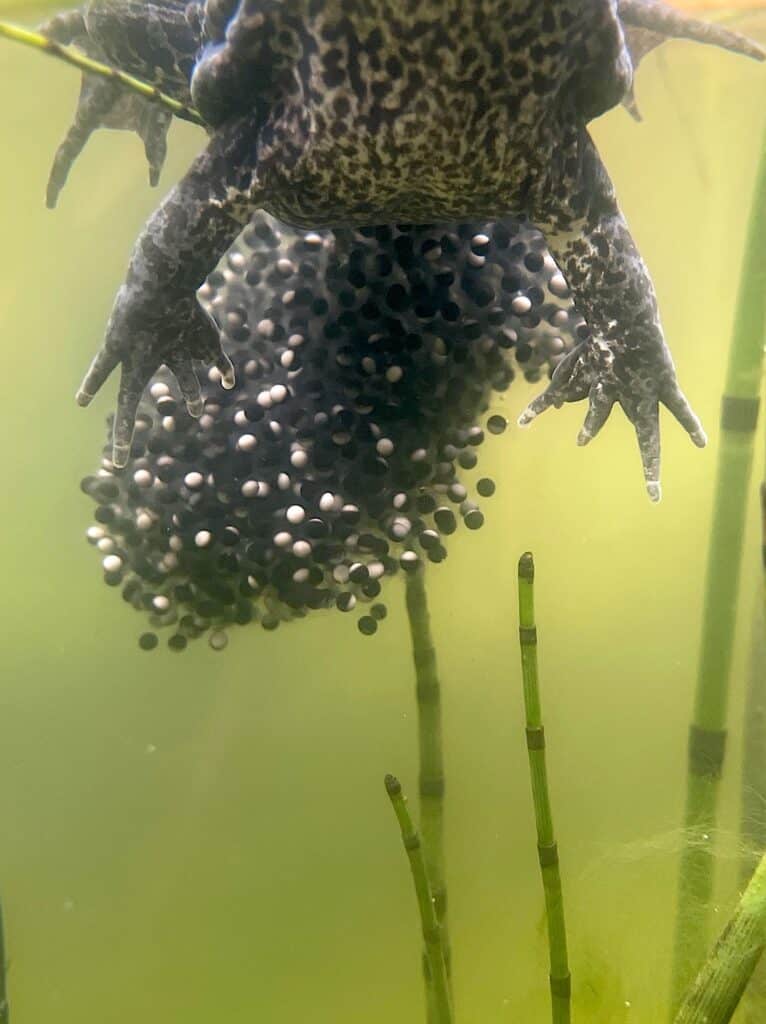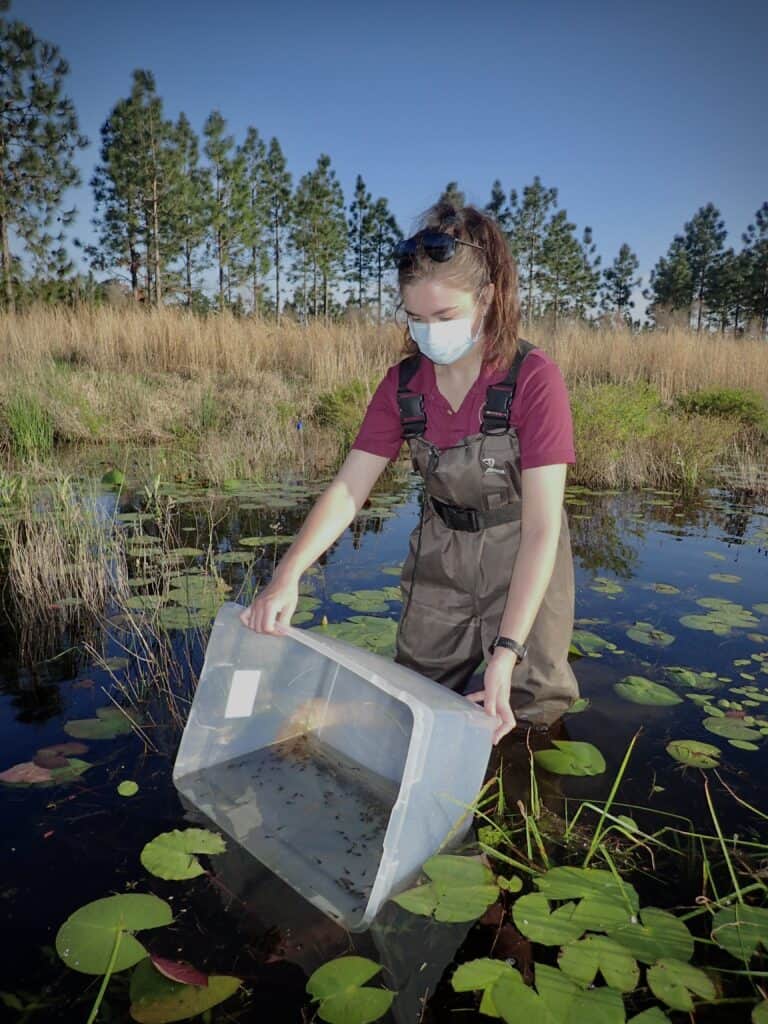Memphis Zoo-led program produces captive-bred amphibians thanks in part to a new outdoor artificial pond facility
Years of reintroducing one of the most endangered frogs in the United States have resulted in a successfully reproducing population in a pair of Mississippi ponds.
“We were able to detect egg masses for three consecutive years,” said Allison Bogisich, an aquarium biologist at the Vancouver Aquarium.
The dusky gopher frog (Rana sevosa), considered federally endangered by the U.S. Fish and Wildlife Service, breeds in seasonal ponds during the winter and spring, then typically disperses to drier areas. They often rely on gopher tortoise (Gopherus polyphemus) burrows to hide from predators and to keep cool when the weather is warm, but the reptiles are considered federally threatened in most of Mississippi.
Dusky gopher frogs once ranged more widely in wetlands across Mississippi and potentially Louisiana. But the loss of both habitat and connectivity has decimated the wild population of this amphibian over the past few decades.
In 2012, surveys revealed a low of only 100 to 200 adults extant in a few ponds in Mississippi, Bogisich said. Zoos began to try to breed the amphibians in captivity. In 2017, biologists attempted to use in vitro fertilization on captive populations.
For several years, these in vitro efforts worked—but only to an extent. The yield of releasable offspring was low, ranging between 82 and 667 a year from 2017 to 2019, Bogisich said. These numbers were nowhere near the thousands that scientists needed to get into the wild, either by head-starting the captive-bred frogs in the zoo or by putting them directly into the wild after hatching. Survival of young frogs is low in the wild, and many tadpoles would need to successfully metamorphose into frogs for the population to succeed. “It took a long time to get the methodology to work properly and to get high quantities of viable offspring,” Bogisich said.

Sudden success in captive breeding
Then, suddenly, the Memphis Zoo, where Bogisich worked as a research associate at the time, struck gold. The facility had built a new outdoor enclosure, complete with an artificial pond, and captive frogs began to breed naturally in the area. The Mississippi Department of Wildlife, Fisheries and Parks and the U.S. Fish and Wildlife Service designated two ponds in the Ward Bayou Wildlife Management Area for reintroduction release—Gil’s Pond and Mayhaw Pond. The species had previously disappeared from this area.
“Suddenly, we had releases of more than 3,000 into the ponds in Mississippi,” Bogisich said.

Releases in the thousands continued for two years, and in a study published recently in Zoo Biology, Bogisich and her colleagues described monitoring efforts they began in 2021.

That year, they detected egg masses laid by wild frogs in both Gil’s and Mayhaw ponds. The following year, they detected egg masses just in Gil’s Pond, and then in 2023, just in Mayhaw Pond. In 2022, the only year they surveyed nearby gopher tortoise burrows outside the breeding season, they found dusky gopher frogs.
Bogisich said that the study highlights the success of the program—especially when many reintroduction programs don’t follow up to see whether they achieved a successfully breeding population of their species.
“If you really want to establish a self-sustaining population, you have to make sure that you are investing in a recovery program, monitoring long-term,” she said.







